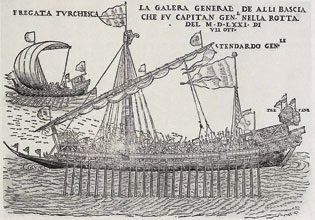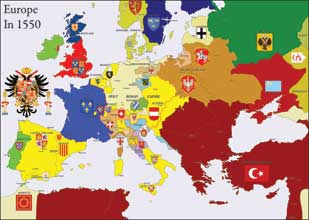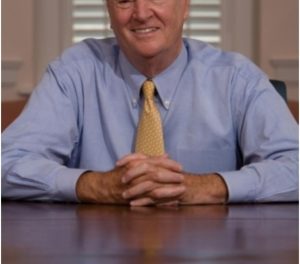France and Spain – To Settle is to Conquer
On February 18, 1562 France implemented the second part of its strategy to penetrate Spain’s claim on what is now the United States. It sent Jean Ribault, and 150 men, to Spain’s Punta Santa Elena (Port Royal Sound) to establish Charlesfort. After building the fort, Ribault departs. He leaves 30 men to establish a French settlement. France eventually tells its European neighbors that they have established Charlesfort as an out-of-country refuge where its protestant Huguenots can worship as they please. Charlesfort, however, only lasts for eleven months. But Spain’s King Philip ll does not know that. He orders the Governor of Cuba to send a ship to Charlesfort and see if it is still operational.
That ship sees an abandoned Charlesfort. But they capture one last remaining French settler. Under oath, seventeen year old Guillermo Rufin was asked this question: “What is your understanding as to why Jean Ribault was ordered to come to Port Royal Sound?” Guillermo Rufin’s recorded answer: “The armada was made and dispatched by order of the Queen Mother of France and the Admiral of Bandoma (Gaspar Coligny). They came to this coast to settle the point of Santa Elena (Punta Santa Elena) and to see if it was a good place to attack the Indies fleet. And this was public knowledge.”
Today our history books tell our children, and grandchildren, that France established Charlesfort as a settlement where their protestant Huguenots could practice their religion in peace. That may have been what they told their French Huguenot settlers. However, they clearly had other plans for Charlesfort.
In mid-February of 1564, Spain’s King Philip is informed that the French have sent a small armada to Punta Santa Elena (Port Royal Sound) to establish Charlesfort. By March of the following year, King Philip is informed that France has abandoned Charlesfort, but that the last Frenchman captured had revealed France’s true plans – to determine if Charlesfort was a good place to ambush the Spanish treasure fleet. More than ever, Spain wonders if France might be a serious threat against its American colonies. King Philip is so concerned that he asks his top military leader, and his friend, Pedro Menendez de Aviles, to give him an assessment of the French threat. Menendez gave King Philip this report in February of 1565:
- I have intelligence that both the English and the French want to settle in La Florida, or what is now the U.S.
- Our biggest threat in the Caribbean is the possibility of France using slave revolts to conquer us in Santo Domingo, Puerto Rico, Cuba, and other Central American countries. The blacks outnumber us 30 to 1 in the Caribbean.
- Our Mexican mines could be threatened if the French discover an inland waterway that can link the East Coast of La Florida to the China Sea. Furthermore, we would lose the enormous trade advantage of finding a shorter route to China if France and England are the first to discover that inland route.
- Thus, I recommend that we make a serious attempt at settling La Florida (i.e., most of the lower 48 states).
- We should take an armada that includes at least 500 people, of all occupations, and go directly to Santa Elena. After settling Santa Elena, we should proceed to settle a total of two or three towns.
France continued its strategy of trying to create permanent settlements in Spain’s first colony, La Florida. In 1564 Spain moved 300 men into Fort Caroline. Fort Caroline was located a few miles inland on the St. Johns River near Jacksonville. Spain was informed of this “invasion” of its colony when a number of French deserters were captured in the Caribbean. These deserters also informed Spain that France was sending a back-up fleet to Fort Carolina in the summer of 1565. Spain’s question, of course, was this. Was France planning to just reinforce Fort Caroline? Or did they have more expansive plans?
In March of 1565 King Philip of Spain received reports from French deserters in Fort Caroline that France would be sending a large reinforcement armada in the summer. To verify that, King Philip sent his top French spy to Dieppe. The spy confirmed the reports. Now both Spain and France were in a race to be the first to either reinforce or destroy the French foothold in North America. To both Spain and France this race meant only one thing: “to settle is to conquer.” Or as the Spanish said it, “poplar es conquistar.”
The end zone for the race was the mouth of the St. John’s River. France’s Fort Caroline was just a few miles inland on the river. However, whoever got to the mouth of the river had a decisive advantage because they could more easily prevent the enemy’s ships from entering the river and finding the French fort. Spain’s top military leader, Pedro Menendez de Aviles, led the Spanish armada. France’s top admiral, Jean Ribault, led the French armada. Ribault won the race to the mouth of the river. This was largely because Pedro Menendez’s armada was badly damaged by a hurricane.
Thus, when Menendez approached the mouth of the St. John’s River on September 4, he saw five of Ribault’s ships anchored on the ocean side of the river inlet. And he saw two smaller ships inside the entrance of the river. Spain’s Menendez had lost the race.
Next Issue: What will Menendez do next?









